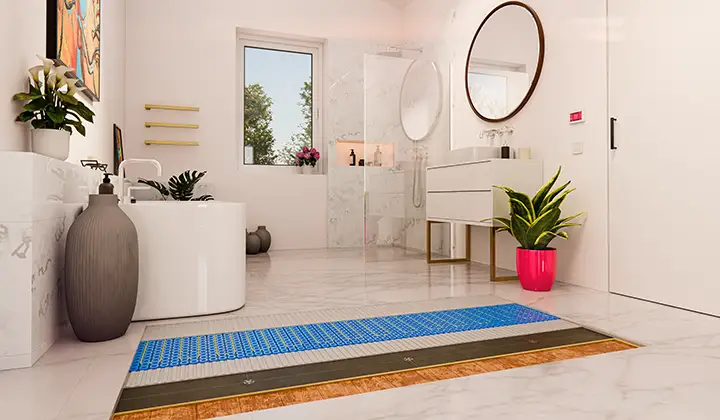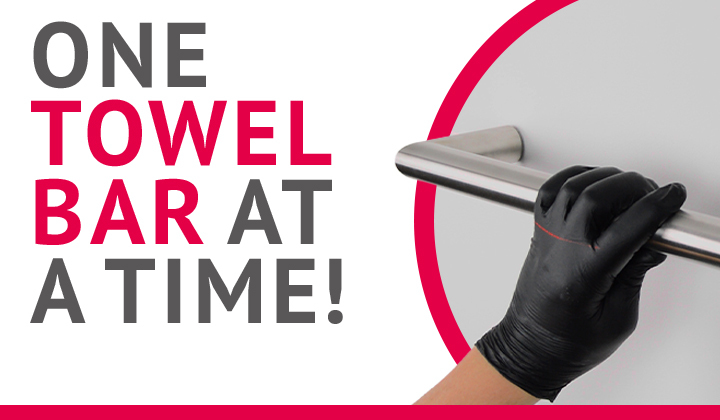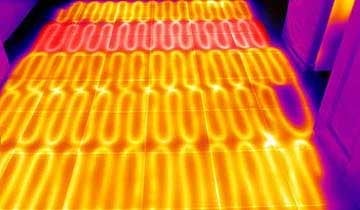6 min read
Raising the bar, one towel bar at a time!
Why ThermoSphere Electric Towel Bars are a cut above Let’s set the record straight: these aren’t your average towel rails. ThermoSphere Electric...

In this blog, we partnered with Danielle Tipping who is the proud Showroom Owner and Designer at Ripples Lindfield in West Sussex. Danielle’s expertise in bathroom design helps to shed some light on the current and future trends of bathroom design and how electric heating is used to add practical and affordable luxury.
By reading this article, you’ll discover:
So, without further ado, here’s what Danielle thinks along with some of our thoughts further down.
Recently it is all about lighting. Specifically, sufficient lighting that can easily be adjusted based on the mood of the client. It’s also got to look the part too. Think strip lighting in niches and decorative hanging pendants. Interest in having automatic (motion sensor) lighting is increasing too. It can be used to create a beautiful atmosphere during the day and is incredibly practical for trips to the bathroom at night.
Storage is another client must have, particularly when designing a bathroom for a busy family home. This includes storage niches built into walls, deep drawers in vanity units and generous amounts of space on a radiator to hang thick, fluffy towels.
We've seen more clients opt for electric underfloor heating as the demand for wet rooms has increased over the years. Underfloor heating also adds a touch of luxury to a bathroom space and our clients love the idea of recreating a hotel-inspired room at home.
A lot of clients don't tend to need a heated towel rail as well as underfloor heating as it tends to be in constant use and provides enough output to efficiently heat the space. However, that means the bathroom can lose important towel hanging space, so heated towel rails and bars are a brilliant addition to a room that has underfloor heating. Not only do they provide a practical solution, but they also add a sleek decorative element to the room.

Clients are turning to electric underfloor heating for more practicality in the ever-popular wet rooms or flush-fitted trays to help with water flow escaping open enclosures or drips from doors. The luxurious feeling of underfloor heating is always a small added cost but for huge lifestyle improvement within the bathroom space and once clients have experiences with underfloor heating in a hotel or a previous home, they rarely go back!
When clients don't choose underfloor heating as part of their bathroom redesign, it's usually due to a fear of energy consumption or costs. That being said, clients are usually pleasantly surprised at the average running cost being lower than what they first thought.
The other reason some clients steer clear of underfloor heating is a perception around what happens if breaks, and how much damage this might cause to their chosen floorcovering.

As mentioned above, one pro of underfloor heating is its ability to dry out a wet room and stop excess water pooling on the floor. However, one con of underfloor heating is that it raises the floor level slightly, however that does make it easier to fit a tray flush to tile.
A pro of electric heated towel rails and towel bars is that they can heat and dry towels effectively plus there are a wide variety of designs and finishes to choose from to match different tastes. One con of heated towel rails is that they can be relatively expensive to install depending on the type the client chooses. Installing one can also sometimes lead to extra wiring being required too.

Thanks again to Danielle from Ripples Lindfield. As mentioned earlier, both running costs and worrying about the system breaking are two key concerns for homeowners when it comes to electric underfloor heating. So, we’re going to help alleviate any fears by addressing those two points.
Running cost of electric underfloor heating
Electric underfloor heating is used differently to traditional types of heating systems. It’s on for between two and four hours each day and usually found in smaller areas such as bathrooms.
The table below provides an estimated annual running cost.
|
Heated Area (m2) |
|||||
|
2 |
4 |
6 |
10 |
15 |
20 |
|
£21.40 |
£42.81 |
£64.21 |
£107.02 |
£160.52 |
£214.03 |
This example is calculated using the ThermoSphere Mesh system at an output of 150W/m2. The cost of electricity is an average at £0.245p/kWh and the system being used for 4 hours per day for 182 days of the year.
It’s no secret that the cost per kilowatt hour of electricity is more than gas. This is why electric underfloor heating is more commonly used in smaller areas compared to any heating system that uses gas.
Another vitally important element to keeping the running cost down is using insulation board within the floor build-up. If it is not used, heat is lost through the subfloor and the room will take longer to reach temperature. This often causes much higher running costs.
If you would like to know a rough estimate of the cost of running an electric underfloor heating system, crunch some numbers using our Running Cost Calculator.
Can electric underfloor heating be repaired?
Electric underfloor heating rarely breaks but if it does, it’s a simple process to find the fault and fix it.
Let’s take the example of a damaged heating cable. It can be easily located and repaired by an electric underfloor heating repair specialist such as UFH Services Ltd. They can locate the damaged area using a thermal camera and detect the fault within a few centimetres. The floor covering is carefully lifted, and the cable repaired.
The cost of repairing an electric underfloor system depends on a few things. These are, where you are in the UK, the type of repair and the time needed to do it. The average cost of a repair is between £300 - £500 and doesn’t include the cost of a replacement floor tile or other floor finish.
If a manufacturing fault, then you should be covered by the manufacturer’s warranty. But, as always, check the details of the warranty and don’t forget to register the installation of your system! However, with system like ThermoSphere Ultimate and if a manufacturing fault is found within 12 months of the system being installed, not only do we replace the underfloor heating system, but we also replace the floor covering too (available after confirmation of successful warranty registration).
For further detail on repairing electric underfloor heating, read Can you repair electric underfloor heating?
If this heating blog article has inspired you to uplift your bathroom, visit your local Ripples showroom.
If you have any questions about electric heating for your next bathroom project, please contact us via the website or give one of the team a call on 0800 019 5899.

6 min read
Why ThermoSphere Electric Towel Bars are a cut above Let’s set the record straight: these aren’t your average towel rails. ThermoSphere Electric...

5 min read
With the heating season just around the corner, and one of the busiest times of the year for any heating manufacturer, we thought it would be a good...

6 min read
One of the most common fears of underfloor heating is the fear of it ‘going wrong’ or stopping working altogether. “Can electric underfloor heating...